After microorganisms and plankton, insects are the most numerous representatives of life on Earth. Most of them are completely harmless, amusing in appearance, but there are those with whom meeting does not bode well.
Many species of insects cause a real phobia in some, because their view is not only unattractive, but even repulsive.
However, the top ten most dangerous insects in the world did not have to get scary-looking “monsters”, sometimes a harmless bug, an ant or a caterpillar that looks quite attractive, can much more threaten human health and even his life. 10 most dangerous insects in the world →
Anopheles or malaria mosquito
These insects, belonging to the genus Diptera, can carry malarial plasmodia, which parasitize in the human body, causing it to have malaria. This mosquito is most active after sunset and at a temperature of more than 10 degrees.
Only females are bloodthirsty, who, biting infected people, become infected themselves and transfer the infection to the following victims.
For 4-10 days spent in the mosquito's body, the malarial plasmodium manages to mature and multiply, and the mosquito itself turns into an active source of infection for 16-45 days. Over 500 million people suffer from malaria every year, and for 3 million of them, meeting a mosquito becomes fatal. The highest mortality from malaria is observed in Africa, which is exacerbated by the miserable state of local medicine.
Only females are bloodthirsty, who, biting infected people, become infected themselves and transfer the infection to the following victims.
For 4-10 days spent in the mosquito's body, the malarial plasmodium manages to mature and multiply, and the mosquito itself turns into an active source of infection for 16-45 days. Over 500 million people suffer from malaria every year, and for 3 million of them, meeting a mosquito becomes fatal. The highest mortality from malaria is observed in Africa, which is exacerbated by the miserable state of local medicine.
Red fire ants
Scientists attributed the red fire ants to the most dangerous and aggressive species of biting insects. Their color is reddish-brown, and the sensation of a victim’s bite resembles a burning sensation by fire, hence the word “fiery” in the name.
The size of these ants is small - 2-6 mm. The historical range of these insects was located in the central part of South America, but people accidentally transported them to different places in the world, where they were fixed.
For a person suffering from allergies, a strong poison and a powerful sting of a red fire ant is a serious danger. At the site of the bite, there is a sensation of exposure to an open flame, which only intensifies over time.
An attack follows if the termites feel threatened by their anthill. Then the whole group of ant starts the attack and mercilessly stings the victim. About 30 people die from their bites every year.
The size of these ants is small - 2-6 mm. The historical range of these insects was located in the central part of South America, but people accidentally transported them to different places in the world, where they were fixed.
For a person suffering from allergies, a strong poison and a powerful sting of a red fire ant is a serious danger. At the site of the bite, there is a sensation of exposure to an open flame, which only intensifies over time.
An attack follows if the termites feel threatened by their anthill. Then the whole group of ant starts the attack and mercilessly stings the victim. About 30 people die from their bites every year.
Lonomy
Among the slow and seemingly indifferent tracks, there are also dangerous creatures. The caterpillar of the small Lonomia nocturnal butterfly lives in the moist forests of South America, and the locals call it the “lazy clown”.
This furry caterpillar is wonderfully masked among the greenery, so you can accidentally suffer from contact with it. The caterpillar has a very attractive appearance - bright, beautiful, covered on all sides with long villi. But they also contain a toxin, which is so strong that the blood clot in the affected person is very quickly broken, the kidneys fail, hemorrhage in the brain and other organs can occur. Red blood cells begin to break down, multiple organ hemorrhage occurs. Outwardly, this is expressed in the appearance of large bruises on the skin.
If a person manages to "stroke" several of these tracks at once, then he will almost certainly die - a hemorrhage in the brain will quickly begin, which will lead to a stroke and death of the victim. Unfortunately, lonomy caterpillars often appear in orchards, where Brazilian farmers accidentally stumble upon them. As a result, 10-30 people die every year, and many more remain disabled.
This furry caterpillar is wonderfully masked among the greenery, so you can accidentally suffer from contact with it. The caterpillar has a very attractive appearance - bright, beautiful, covered on all sides with long villi. But they also contain a toxin, which is so strong that the blood clot in the affected person is very quickly broken, the kidneys fail, hemorrhage in the brain and other organs can occur. Red blood cells begin to break down, multiple organ hemorrhage occurs. Outwardly, this is expressed in the appearance of large bruises on the skin.
If a person manages to "stroke" several of these tracks at once, then he will almost certainly die - a hemorrhage in the brain will quickly begin, which will lead to a stroke and death of the victim. Unfortunately, lonomy caterpillars often appear in orchards, where Brazilian farmers accidentally stumble upon them. As a result, 10-30 people die every year, and many more remain disabled.
Giant hornet
Gigantic hornets live in many places in Asia: in China, India, Nepal, Korea, Japan, and even in our Primorsky Territory, such individuals were noticed. The length of these giants can exceed 5 centimeters, they have very powerful jaws and an impressive length (6 mm) sting, with which they easily pierce human skin.
Such an aggressive predator attacks without any special reason, and fighting off without assistance is not easy. Attacking, the hornet repeatedly launches the sting, with each injection, injecting a new portion of the poison. He acts very painfully, while also destroying muscle tissue. One Japanese entomologist who was attacked by such a hornet described his bite as the effect of a hot nail. 30-70 people die every year from the bites of a giant hornet.
Such an aggressive predator attacks without any special reason, and fighting off without assistance is not easy. Attacking, the hornet repeatedly launches the sting, with each injection, injecting a new portion of the poison. He acts very painfully, while also destroying muscle tissue. One Japanese entomologist who was attacked by such a hornet described his bite as the effect of a hot nail. 30-70 people die every year from the bites of a giant hornet.
Army ants
In the world there are a huge number of species of ants, and many of them are very dangerous. These include army soldier ants, which are a specialized caste of working ants and termites. Lack of vision makes them only more dangerous, because they attack everything that has flesh and blood - a fly, an elephant or a person.
These fighters move in colonies, but they do not build anthills, so getting caught in their way will not seem enough. This type of ants has a large body, reaching 3 centimeters. They are armed with powerful long stings, which easily reveal the flesh. After making a hole, the ants climb into the wound and continue to destroy the tissue, which gives the victim incredible pain. They were even figuratively called "living death." A colony of such ants in a week would be able to gnaw an elephant, but there would be a lot of day for a person.
These fighters move in colonies, but they do not build anthills, so getting caught in their way will not seem enough. This type of ants has a large body, reaching 3 centimeters. They are armed with powerful long stings, which easily reveal the flesh. After making a hole, the ants climb into the wound and continue to destroy the tissue, which gives the victim incredible pain. They were even figuratively called "living death." A colony of such ants in a week would be able to gnaw an elephant, but there would be a lot of day for a person.
African killer bee
The main danger of these bees is in their aggressiveness and desire to capture new territories. If ordinary bees do not attack the hive without threat, then a cross between African bees and other bees will attack everything that moves nearby.
They do it in a swarm, and the poison of each individual is no weaker than the snake. One such killer bee will not do much harm, but if it is a swarm, then the victim will begin a severe allergic reaction, quickly developing into anaphylactic shock, which most often ends fatally.
A bee hatched by humans is difficult to distinguish from an ordinary honey bee. Their danger lies in the high ability of assimilation to new conditions, therefore, having appeared in Brazil, they gradually spread throughout America, and then headed east, destroying other species of bees.
They do it in a swarm, and the poison of each individual is no weaker than the snake. One such killer bee will not do much harm, but if it is a swarm, then the victim will begin a severe allergic reaction, quickly developing into anaphylactic shock, which most often ends fatally.
A bee hatched by humans is difficult to distinguish from an ordinary honey bee. Their danger lies in the high ability of assimilation to new conditions, therefore, having appeared in Brazil, they gradually spread throughout America, and then headed east, destroying other species of bees.
Tsetse fly
This African fly is also one of the most dangerous insects in the world, as it can transmit to a person with a bite of the causative agent of sleeping sickness. This disease has been known for a long time, but doctors have not found a reliable way to cope with it.
As the disease develops in a person, significant disturbances in the functioning of the nervous system occur, drowsiness is observed, consciousness becomes confused. In the most severe cases, a coma and subsequent death can occur. According to statistics, about half a million people are already infected with this disease south of the Sahara, and a painful long death awaits most of them.
As the disease develops in a person, significant disturbances in the functioning of the nervous system occur, drowsiness is observed, consciousness becomes confused. In the most severe cases, a coma and subsequent death can occur. According to statistics, about half a million people are already infected with this disease south of the Sahara, and a painful long death awaits most of them.
Bullet ant
Another dangerous representative of ants from South and Central America, who arranges their nests on the basis of trees, in the crowns of which these ants are engaged in foraging, and if necessary, dive for victims.
Bullet ants have a very strong toxin (stronger than any bee or wasp). They inject it with a powerful sting up to 3.5 mm long. A terrible pain from a bite, reminiscent of the pain from a gunshot wound, a person experiences throughout the day, so these insects are also called "ants-24 hours." During this time, a person experiences severe torment and severe convulsions.
A number of Indian tribes living in the rain-forests have preserved the rite of initiation of the boys, in which they put a special mitten on their arm for 10 minutes, where the bullet ants fixed there are located. The sensations are about the same as if a person put his hand in a pile of hot coals. After that, for some time, the initiate covers paralysis, and the bitten limb blackens.
Bullet ants have a very strong toxin (stronger than any bee or wasp). They inject it with a powerful sting up to 3.5 mm long. A terrible pain from a bite, reminiscent of the pain from a gunshot wound, a person experiences throughout the day, so these insects are also called "ants-24 hours." During this time, a person experiences severe torment and severe convulsions.
A number of Indian tribes living in the rain-forests have preserved the rite of initiation of the boys, in which they put a special mitten on their arm for 10 minutes, where the bullet ants fixed there are located. The sensations are about the same as if a person put his hand in a pile of hot coals. After that, for some time, the initiate covers paralysis, and the bitten limb blackens.
Triatom bugs
They have another, more erotic name - kissing bugs, because these creatures, of which there are 130 species, like to bite a person near their lips. They are widespread in the tropics of South and Central America, Africa, Asia and Australia.
Mostly these species feed on plant foods, but there are parasites that drink blood from humans and large animals. They are supposed to attack a person at night, when he is sleeping, and dig into his lips. Well, that’s how they can still give him a parasite that causes Chagas disease. From such passionate night kisses, up to 12,000 people die every year. The smallest bite, which a person will not even feel, leads to such serious malfunctions in the body that cannot be eliminated without the help of medicine.
Mostly these species feed on plant foods, but there are parasites that drink blood from humans and large animals. They are supposed to attack a person at night, when he is sleeping, and dig into his lips. Well, that’s how they can still give him a parasite that causes Chagas disease. From such passionate night kisses, up to 12,000 people die every year. The smallest bite, which a person will not even feel, leads to such serious malfunctions in the body that cannot be eliminated without the help of medicine.
Gadfly
We are well acquainted with the usual gadfly, which can bite painfully, but nothing more. But there is a special kind of human skin gadfly, the danger of which lies in its parasitic larvae. Such gadflies live in South and Central America. The female of such a gadfly lays eggs on the skin of humans or other mammals.
The hatched larva gnaws a passage through the skin and settles under it for two months. A person is even able to feel the movement of the larva under the skin. When the larva fully ripens, it leaves the body of the hospitable host, which at the moment of separation does not feel the most pleasant sensations.
The unsightly appearance and so indelicate behavior of this larva put it among the most unpleasant insects.
Another representative of gadfly is the nasopharyngeal gadfly, which is one of the largest flies. But he is most dangerous to sheep. Females of this gadfly inject up to 40 larvae into the poor sheep’s nasopharynx at a time. Then they feed on the host's surrounding tissues for six months, causing sheep's asterosis in him.
The hatched larva gnaws a passage through the skin and settles under it for two months. A person is even able to feel the movement of the larva under the skin. When the larva fully ripens, it leaves the body of the hospitable host, which at the moment of separation does not feel the most pleasant sensations.
The unsightly appearance and so indelicate behavior of this larva put it among the most unpleasant insects.
Another representative of gadfly is the nasopharyngeal gadfly, which is one of the largest flies. But he is most dangerous to sheep. Females of this gadfly inject up to 40 larvae into the poor sheep’s nasopharynx at a time. Then they feed on the host's surrounding tissues for six months, causing sheep's asterosis in him.



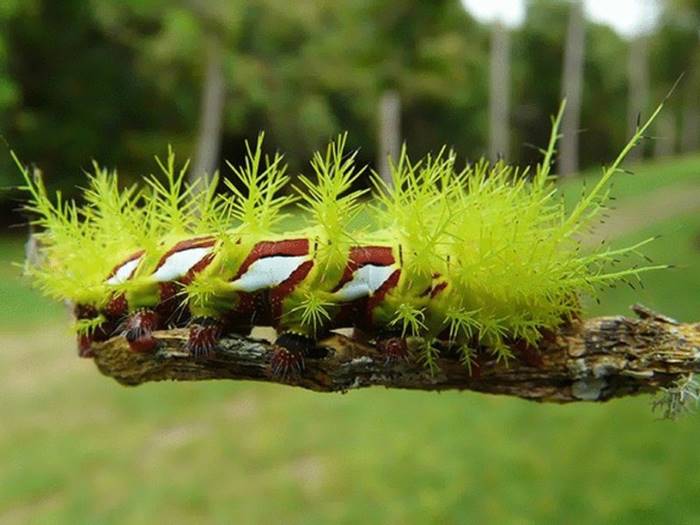

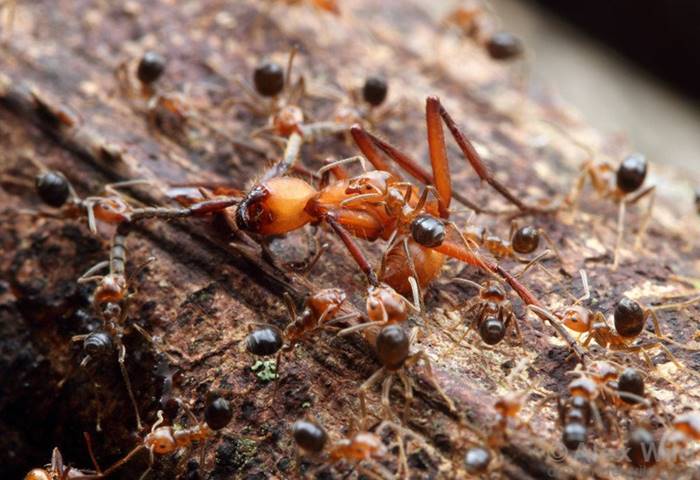
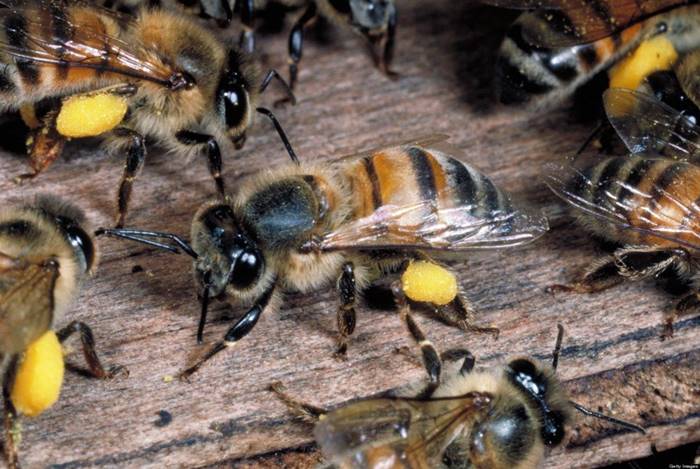


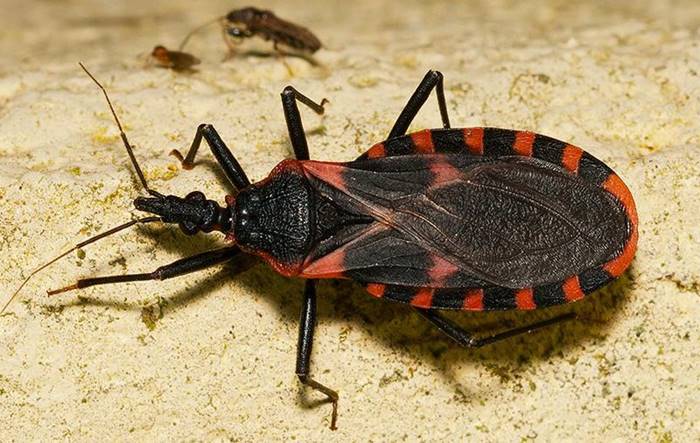
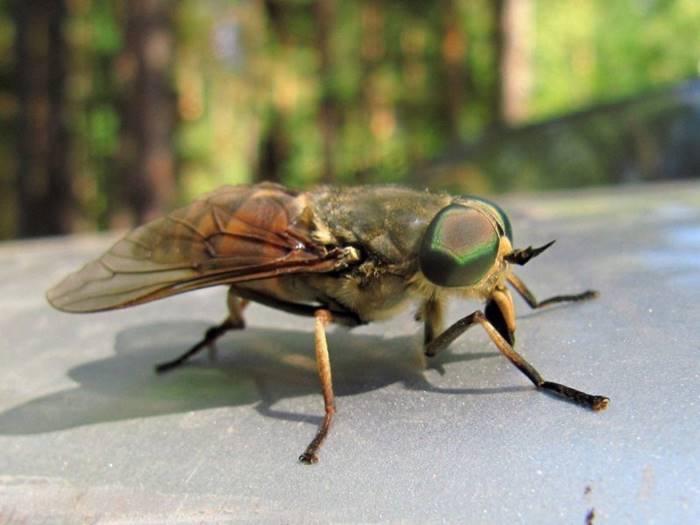

No comments:
Post a Comment